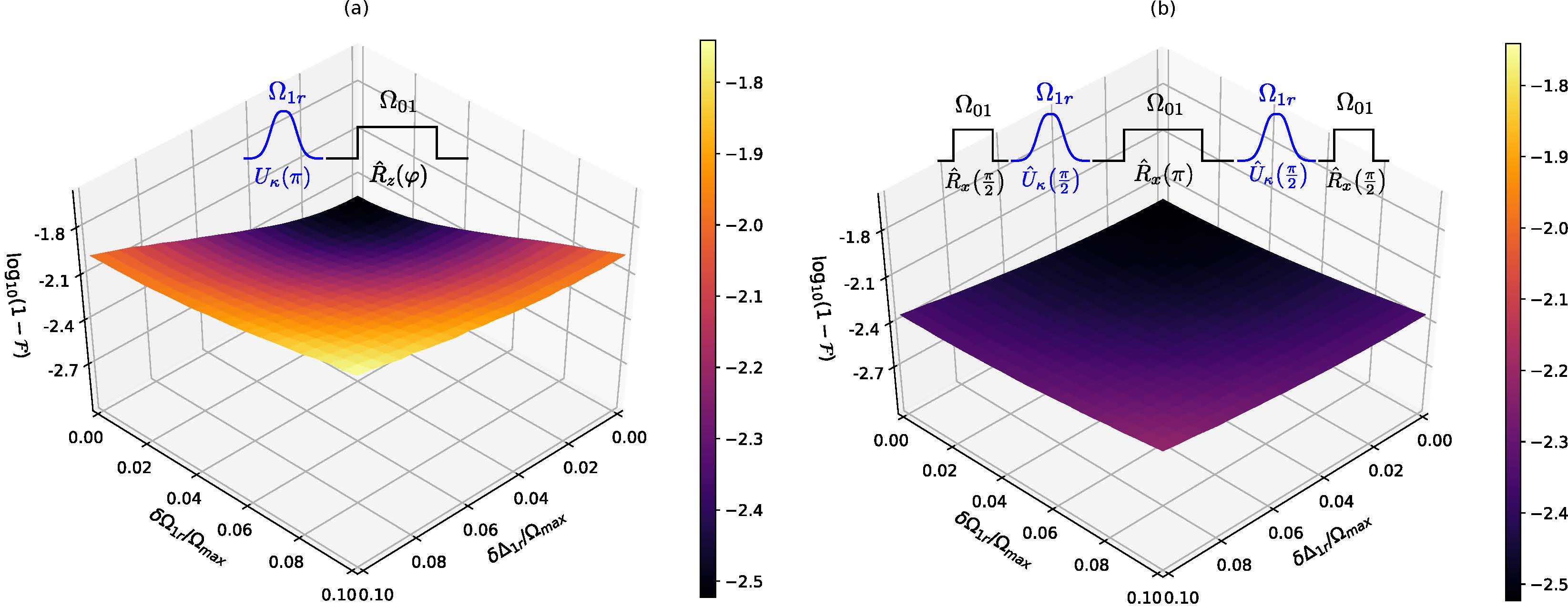Adiabatic rapid passage facilitates robust entangling gates for neutral atoms
June 16, 2020 - Pablo Poggi

Top: the sequence using spin echo and rapid adiabatic passage to implement a Mølmer-Sørensen gate. Bottom: loss of gate fidelity, measured as gate infidelity on a log scale for different levels of imperfections in the experiment; the flat surface shows the robustness to errors due to atomic motion, finite temperature and other sources of error.
Anupam Mitra, Pablo Poggi and Ivan Deutsch collaborating with Michael Martin, Grant Biedermann and Alberto Marino at Sandia National Laboratories, Los Alamos National Laboratory and the University of Oklahoma have published a Rapid Communication in the journal Physical Review A proposing a way to implement a robust two-qubit entangling gate, the Mølmer–Sørensen gate, for neutral atoms using rapid adiabatic Rydberg dressing.
Neutral atoms, like their charged ion counterparts, are considered to be a promising platform for scalable quantum computation, allowing for virtually perfect single qubit operations on extremely coherent neutral atom quantum bits, which are at the heart of ultra-precise atomic clocks. On the other hand, generating entanglement between neutral atoms has proven to be more challenging. Proposals for achieving two-qubit entangling gates are based on accessing their highly excited Rydberg states, which typically have strong interactions with other atoms. However, exciting to Rydberg states leads to many challenges like finite radiative lifetime of Rydberg states and loss of quantum coherence due to motion induced dephasing.
In this work, the authors propose using a rapid adiabatic passage from a clock state to a Rydberg state and back to introduce a nonlocal two-atom dynamical phase rapidly compared to Rydberg radiative lifetimes. Moreover, they show that the resulting entangling gate is robust to imperfections in the experiment like laser frequency detuning, laser amplitude, finite atomic motion and imperfect Rydberg blockade. They show the dominant contribution to the errors in implementing a two-qubit entangling gate is from the single-qubit component of a two-qubit entangling gate. Using a simple spin-echo combined with rapid adiabatic passage, they show how a pure entangling gate, the Mølmer–Sørensen gate can be implemented with high fidelity over a large range of experimental imperfections. Analogous to the use in atomic ion based quantum logic, the Mølmer-Sørensen gate for neutral atom based quantum logic can affectively mitigate the errors due atomic motion and finite temperature.
This serves as a milestone towards developing large-scale quantum computers with neutral atoms. The full article can be found online at https://link.aps.org/doi/10.1103/PhysRevA.101.030301
